Vintage Corelle “Meadow” dish — positive for FOUR poisons (Lead, Cadmium, Mercury & Antimony) on the food surface, including 16,700 ppm Lead (90 ppm & up is unsafe for kids)
For those new to the Lead Safe Mama website:
Tamara Rubin is a multiple-federal-award-winning independent advocate for childhood Lead poisoning prevention and consumer goods safety, and a documentary filmmaker. She is also a mother of Lead-poisoned children (two of her four sons were acutely Lead-poisoned in 2005).
- Tamara owns and runs Lead Safe Mama, LLC — a unique community collaborative woman-owned small business for childhood Lead poisoning prevention and consumer goods safety.
- Since 2009, Tamara has been conducting XRF testing (a scientific testing method) using the exact instrumentation employed by the U.S. Consumer Product Safety Commission to test consumer goods for toxicants (specifically heavy metals — including Lead, Cadmium, Mercury, Antimony, and Arsenic).
- Since July of 2022, the work of Lead Safe Mama, LLC has been responsible for 5 product recalls (FDA and CPSC).
- All test results reported on this website are science-based, accurate, and replicable.
- Items that Lead Safe Mama, LLC reports on are tested multiple times to confirm the results published (for each component tested).
- Recent notable press… There has been too much to mention already in 2024! Please check out our press page to see some of the amazing coverage of our work so far this year!
This is an ad-free article.
Advertising and affiliate income help Lead Safe Mama, LLC cover the costs of the work we do here (independent consumer goods testing and childhood Lead-poisoning prevention advocacy). We have removed ads from most of our more widely-read articles (like this one!) to make them easier for you to read. In addition to supporting this work by starting any shopping you might be doing with clicks on our affiliate links, if you would like to support the independent consumer goods testing and childhood Lead-poisoning prevention advocacy work of Lead Safe Mama, LLC by making a contribution (which will also help us keep our more widely-read articles ad-free), click here. Thank you!
-
Please click through this link to learn more about the testing methodology used for the test results discussed and reported on this website.
-
To learn more about the Lead Safe Mama, LLC community collaborative business model, click here.
-
To learn more about the concern for/potential impacts of Leaded glaze/Lead painted decorations on vintage dishware, including potential for health impacts, click here.
Published: April 30, 2022
Updated: March 11, 2024
When tested using XRF technology, all patterns of vintage (pre-2005) Corelle dishes with printed colorful patterns (normally found on the food-contact surface of the dish, like with the dish pictured — or also sometimes found on the exterior of the Corelle bowls and coffee cups) test positive for unsafe levels of Lead and / or other toxicants (poisonous heavy metals) including Cadmium, Arsenic and Antimony in the painted decorations.
The vintage and new plain white and plain sand / cream colored versions of glass dishes from this brand (the dishes with no painted markings besides the logo mark on the underside) are safe for use with food as they test negative for Lead and Cadmium in nearly every instance (when tested with XRF technology – which is a way to acurately measure the total content of metals of an object, in parts per million [ppm]).
The following short video shows the dish pictured being tested using two different testing methodologies, XRF testing and reactive agent home testing:
View this post on Instagram
Full Test Results for the dish pictured above (as well as a discussion of the safety concern for these dishes) are below. But first – some safer (confirmed lead-free) dish options:
- Prices below are from April 4, 2024
- 18-piece service for 6: $53.57 (Made in USA) – https://amzn.to/43ieIYn
- 78-piece service for 12: $199.99 (Made in USA) – https://amzn.to/43aGEgV
- Set of 6 dinner plates: $38.74 (Made in France) – https://amzn.to/43aGUwp
- Set of 6 dinner plates: $17.49 (Made in Spain) – https://amzn.to/49pYhea
- You can also buy clear glass (unpainted, undecorated) dinner plates from the Dollar Store – and they are typically also Lead-free.
- The white glass plates from Target are also Lead-free (test results here)
- The white glass plates from Ikea are also Lead-free (test results here)
Amazon links are affiliate links. If you purchase something after clicking one of Lead Safe Mama, LLC’s affiliate links, we may receive a percentage of what you spend (at no extra cost to you).
Continue reading below the images. Each of the small images below is a link to an article with the test results for the dish pictured.
 •
•  •
•  •
•  •
•  •
•  •
•  •
•  •
•  •
•  •
•  •
•  •
•  •
•  •
•  •
•  •
•  •
•  •
•  •
•  •
•  •
•  •
•  •
•  •
•  •
•  •
•  •
•  •
•
This article discusses the dish below (and specifically XRF test results for heavy metals for this dish):
Full XRF test results for the vintage “Meadow” pattern Corelle dish pictured are below. For additional information please check out the following articles:
- More Corelle dishware that has been tested by Lead Safe Mama, LLC
- An article discussing Corelle representative’s statement that pre-2005 dishware should be retired from food-use purposes.
- An article discussing the concern for Cadmium in consumer goods.
- An article covering the issue (of toxic heavy metals found in vintage dishware) from a broader perspective.
- If you are new here, please also check out the menu for this website (link here), which has quick buttons to many related topics and other products we have tested, along with their test results.
Test on the center of the dish (orange and yellow flower)
60-second test (using an XRF instrument)
All tests are repeated multiple times to confirm the results.
- Lead (Pb): 16,700 +/- 300 ppm
- Cadmium (Cd): 209 +/- 11 ppm
- Mercury (Hg): 54 +/- 22 ppm
- Bromine (Br): non-detect
- Arsenic (As): non-detect
- Chromium (Cr): non-detect
- Iron (Fe): 647 +/- 114 ppm
- Cobalt (Co): 103 +/- 53 ppm
- Copper (Cu): 43 +/- 24 ppm
- Zinc (Zn): 231 +/- 25 ppm
- Titanium (Ti): 14,800 +/- 1,300 ppm
- Zirconium (Zr): 1,388 +/- 37 ppm
- Indium (In): 12 +/- 8 ppm
- Tin (Sn): 15 +/- 9 ppm
- Antimony (Sb): 43 +/- 14 ppm
- Platinum (Pt): 369 +/- 71 ppm
- No other metals were detected in consumer goods mode. All tests are repeated multiple times to confirm the results.
How much Lead is “too much” Lead?
The painted/decorative elements on these particular dishes tested positive for 16,700 ppm Lead.
For context, the amount of Lead that is considered toxic in a newly manufactured item “intended for use by children” is anything 90 ppm Lead or higher in the paint, glaze, or coating, and anything 100 ppm Lead or higher in the substrate.
Dishes (modern or vintage) are not considered to be items “intended for use by children,” and thus are not regulated for total lead content in the same way as toys and other similar children’s items (unless they are dishes expressly manufactured, marketed and sold as children’s dishes after 2010).
Why is this much Lead a problem?
There is no place for Lead on our dining tables (or in our kitchens). None at all. All Federal agencies agree that there is no safe level of Lead exposure for humans, especially for children. Said another way, Lead can cause harm at any level of exposure.
To find 16,700 ppm Lead on the center of the food surface of a dish is very alarming. The Lead in this dish is also definitely (without question) bioavailable (as demonstrated by the second testing methodology shown in the short video at the top of this article). What this means is that when you eat food from this dish (especially hot food or acidic food – including foods prepared with lemon juice, vinegar or tomato sauce) you are likely ingesting an unsafe level of micro-particulate Lead with your meal.
It literally just takes a microscopic amount of Lead to poison a child (or any human for that matter) and there is currently (at the time of publishing this article) NO ONE that we are aware of (no researcher or public agency) who is studying the potential impact that eating (daily!) off of Lead-painted vintage dishware has on the users (because no corporation has identified a direct financial benefit from such a study).
There was however a study done in 2017 (in Plymouth, England) that evaluated the concern for health impacts caused by Lead paint on decorative glassware (drinking glasses). Given these Corelle dishes are essentially the same combination of materials (glassware with high-Lead paint), one can easily extrapolate that the concerns brought up by that study likely also apply to painted / decorated vintage Corelle dishes. Here’s the link to an article discussing that study, Here’s an article from The Guardian — published in November of 2023 — that also brought up the concern for painted glassware.
The FDA and the State of California each also warn about the concerns for Lead-contaminated dishware (including vintage dishware), but unfortunately they each focus more on handmade (“Traditional”) potteries from other countries (vs. focusing on USA made vintage items) so people are not quick to understand that these health implications apply to Lead-contaminated vintage dishes across the board.
- Here’s a link to the FDA warning on the subject
- Heres a link to the State of California’s warning on the subject
- Here’s a link to Alameda County, California’s warning on the subject
Given Lead’s extreme toxicity (and especially given the lack of regulation of vintage Lead-contaminated items) , we need to err on the side of prudence and proactively remove all potential sources of Lead exposure from our homes ourselves, starting with the easy things like the dishes we choose to eat on every day. To learn more about why Lead in vintage dishware is a potential concern, please click here.
What should I do if I have been eating off of these dishes?
If you have been eating off of these dishes (or similar dishes from this era — even if the painted decorative elements are “only on the edges” of the dish or “only on the outside’ of the dish), we encourage you to stop using these dishes immediately and to ask your doctor for a Blood Lead Level test, to determine if you might have any potential exposure that needs to be addressed. Please check out the following article links for additional information that you may find helpful:
- More information about Blood Lead Testing
- Information about Hair or Urine Testing as alternatives
- Addressing the question “but will this dish actually poison me?”
- Addressing the response “I have used these for 50 years and I’m fine!”
- Why this is a problem even if the Lead painted decorations are “only on the outside” of the dish
- More information about symptoms of Lead poisoning in adults
- More information about symptoms of Lead poisoning in children
- The documentary film on childhood Lead poisoning that we produced
- The most effective (and practically free) food-based natural detox method
~ End ~
The photo below is the back of the dish pictured above.
Never Miss an Important Article Again!
Join our Email List









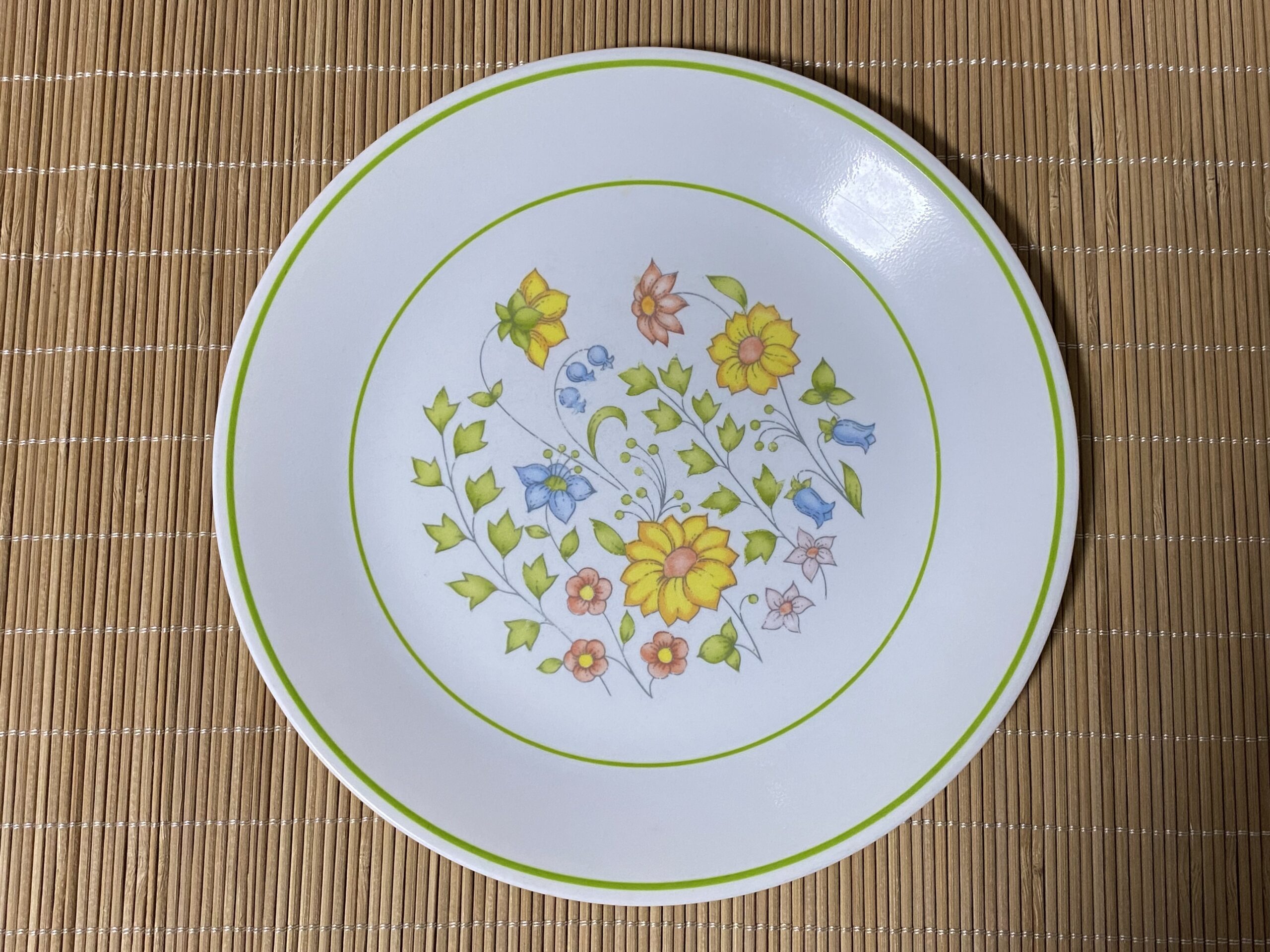
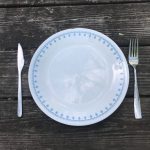
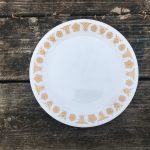
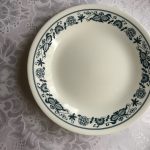
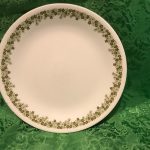

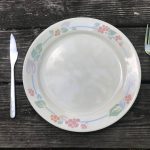
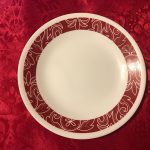
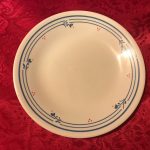
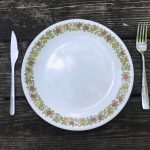
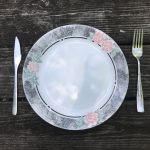
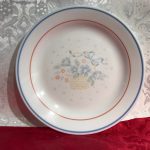
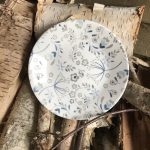
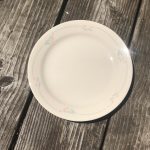
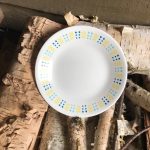
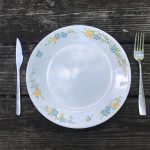
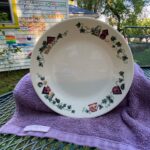
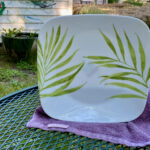
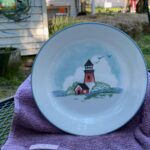
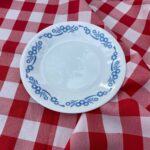
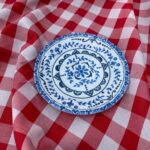
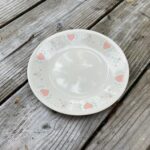
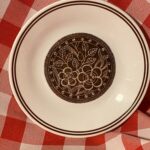
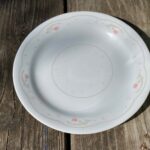
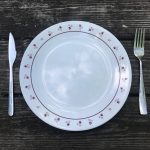
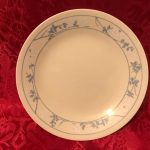
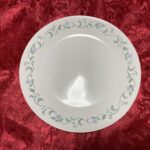
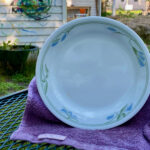
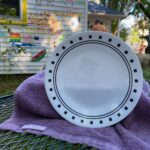
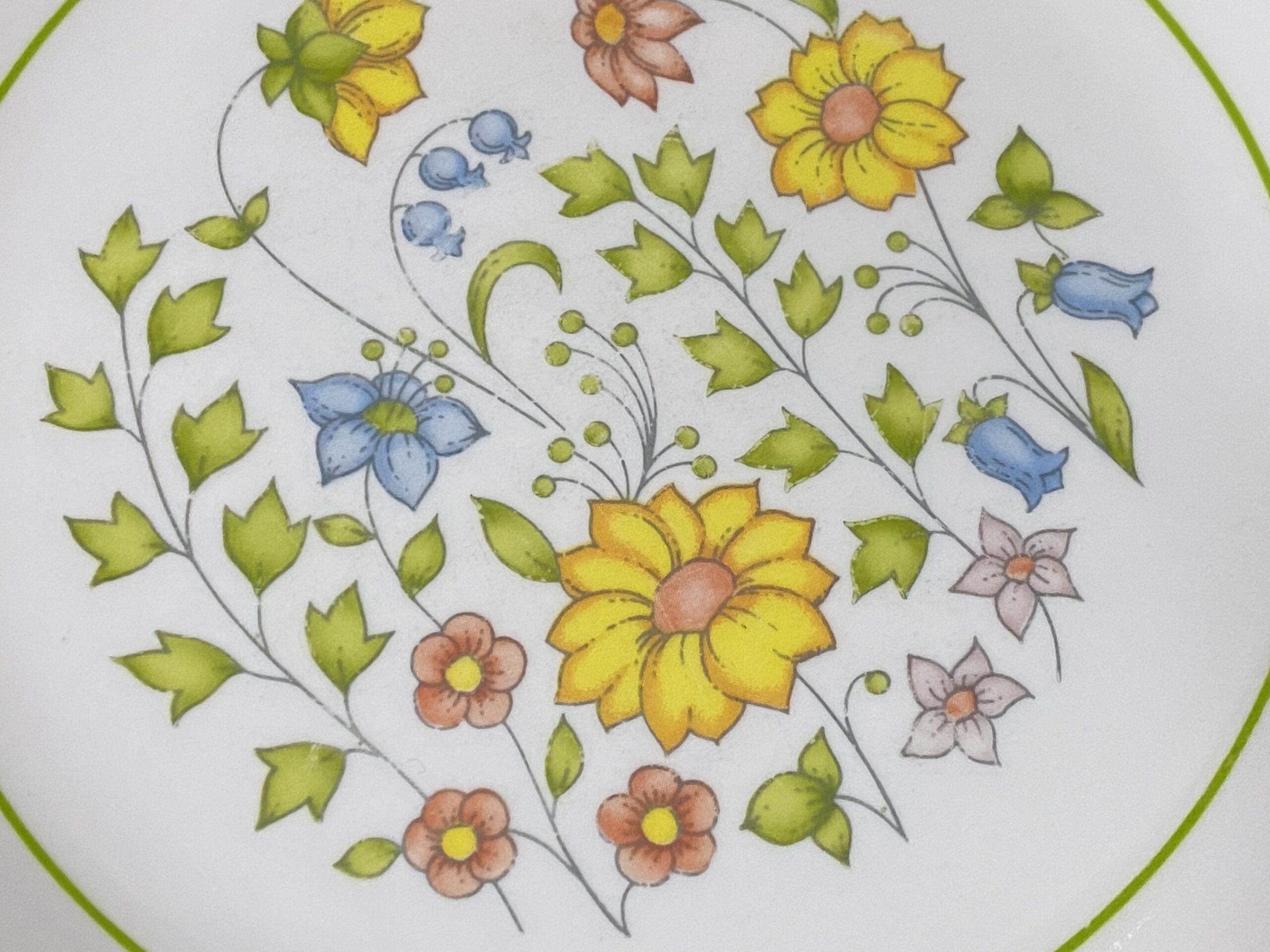
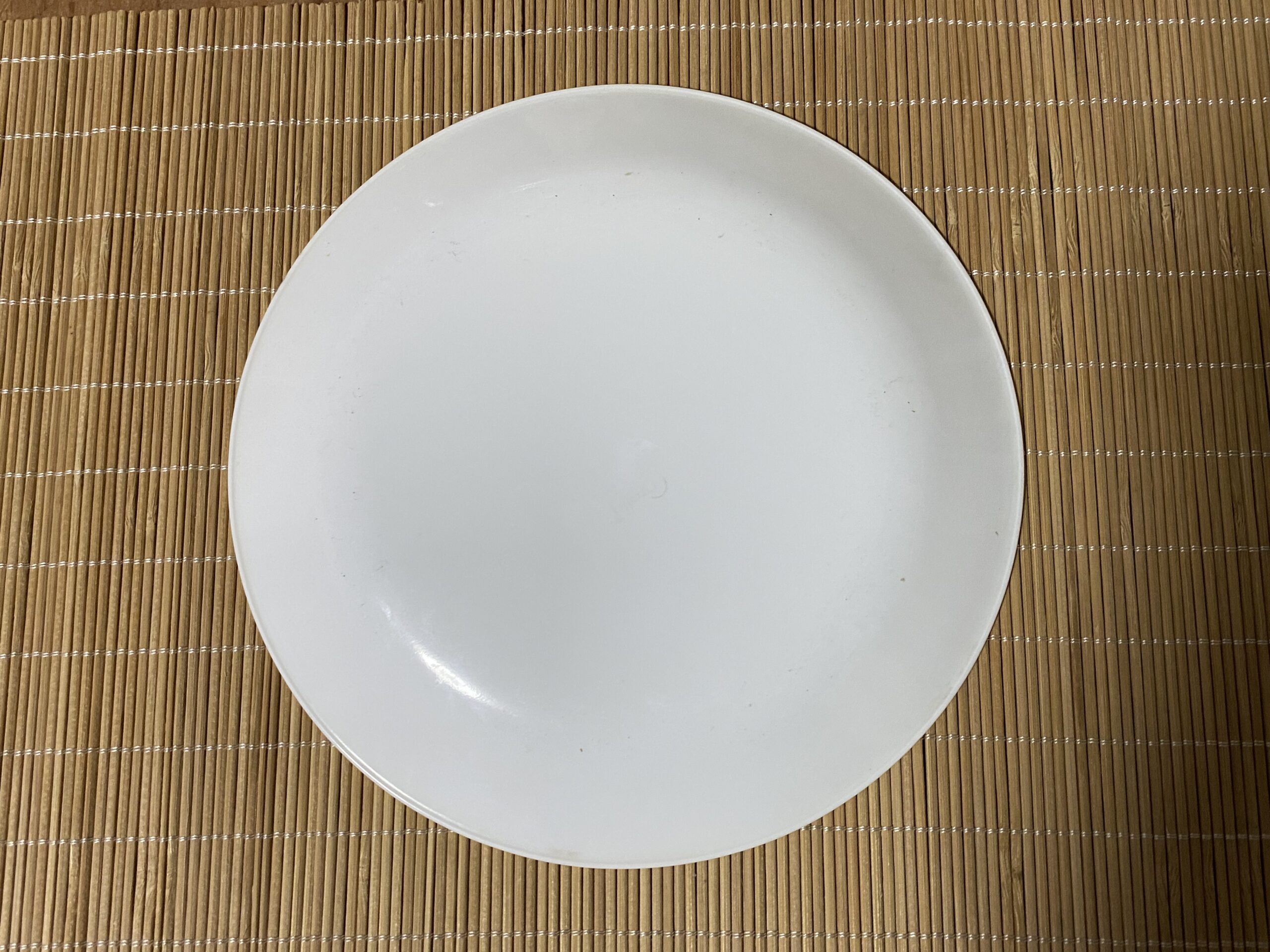

SO . . . I have these dishes and use them regularly with our meals Grandsons included. Do I need to get rid of them and replace them?
I have Meadow dishes also, been using them for 40 years!
What dishes are safe now! Is new pattern of Corelle ok???
I have the Iris Corelle set I do do not see this pattern listed anywhere should we stop using them?
I have the Corelle “Heart” pattern dishes – a red/blue quilt-like decoration only on the edges of the plates & cream soup bowls. (Cereal bowls have the pattern only on the outside). Has this pattern been tested?
What year were they purchased?
Have you tested the wildflowers and bamboo corelle? I posted pictures in response to my question on FB, but not sure if you saw it.
What about if you only have winter frost white corelle? Or the casseroles that only have paint on the outside?
Please read this:
https://tamararubin.com/2020/07/if-the-lead-is-only-on-the-outside-of-my-dish-measuring-cup-mixing-bowl-etc-why-does-it-matter-that-it-has-lead/
And this:
https://tamararubin.com/2021/06/but-is-this-dish-or-toy-or-lamp-or-vitamin-or-piece-of-jewelry-or-tibetan-brass-singing-bowl-actually-going-to-poison-me-and-how-would-that-happen-exactly/
I have corella vitrelle blue dishes made in USA. Are they safe? I thought if it was made in the USA it was safe. Please let me know if it is.
Thank you for what you are doing.
I have the hallway garden pattern . Is it safe
I have the Pink Trio. I can’t remember when I got them, but have had them forever.